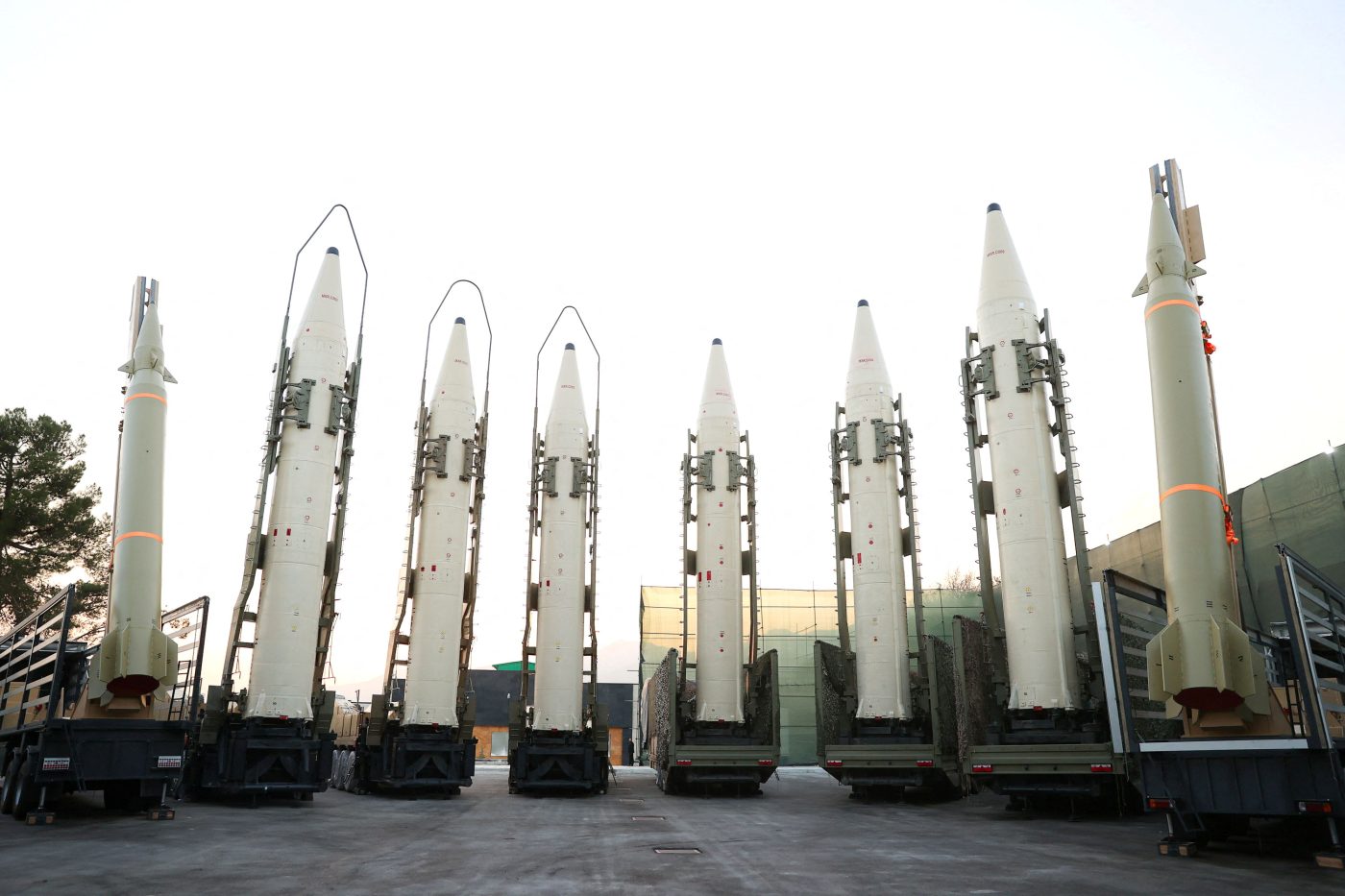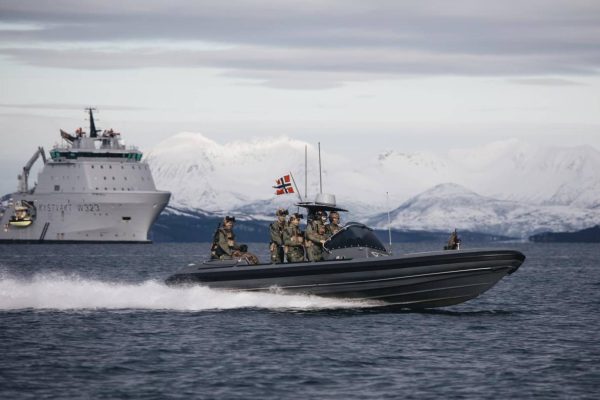The shipments would include Iran’s Fateh-110 and Zolfaghar solid-propellant short-range ballistic missiles (SRBM), with a declared range of 300 and 700-plus kilometers (186 and 435 miles), respectively.
They are very hard to shoot down and have the potential to seriously impact the Ukrainian war effort. Not for the first time, a somnolent Europe is allowing its enemies to dictate the pace of a war it cannot afford to lose.
While Ukrainian officials have not so far detected the use of Iranian missiles by Russia, their potential deployment would pose serious challenges for Kyiv’s forces at a time when they are already stretched thin due to a severe shortage of ammunition and lack of manpower.
Conversely, Russia now enjoys an advantage in both these critical areas and is unsurprisingly exploiting this situation to mount offensive operations and slowly advance in areas of Donbas.
Attrition has become the driving force and most distinctive feature of this conflict. That’s largely because of the near-ubiquitous surveillance enabled in particular by airborne sensors connected with artillery, which has favored indirect fire at the expense of maneuver. As both sides vie for fire superiority, a batch of several hundred ballistic missiles would provide Russia with a significant advantage from both a quantitative and qualitative standpoint.
First, they would replenish Moscow’s ballistic missile stocks with the equivalent of more than a year’s domestic output, as Russia has managed to increase production of its Iskander-M ballistic missile system from seven to 30 munitions per month through 2023. The Russian military will thus have enough missiles to increase their use and extend it over time.
Second, they will diversify Moscow’s missile arsenal and allow more frequent longer-range strikes, delivering very powerful warheads with good accuracy. The first land-attack iteration of the Zolfaghar missile, for instance, has a detachable 350kg-500kg (770-1,100lb) warhead and an estimated circular error probable (CEP, a calculated radius within which roughly half of all strikes will fall) lower than 50 meters thanks to an upgraded guidance system that combines inertial and global navigation satellite system (GNSS) modules.
This means Ukrainian critical infrastructure and military installations (i.e., logistics and training facilities, airbases, command posts, etc) would be under serious threat. The impact on operations, especially in terms of proper command and control and steady resupply of the frontline, may be significant.
Third, given their supersonic speed and flight profile, ballistic missiles are harder for air defenses to intercept and require high-end air-defense systems like the US-made Patriot and the Franco-Italian SAMP/T, of which Ukraine possesses only a few.
Iranian ballistic missiles will therefore not only pose a significant threat but they would also deplete Ukrainian stocks of high-end interceptors, creating potential vulnerabilities in air defense that Russia can then exploit with other attack assets like one-way attack munitions and cruise missiles.
This is an approach Russia has already tested through occasional salvoes combining large numbers of slow Shahed one-way attack munitions and air/ship-launched cruise missiles to saturate and penetrate Ukraine’s anti-access area denial (A2/AD) zones.
The implications of Iran’s growing weaponry shipments to Russia, however, go beyond the immediate battlefield impact.
Selling its missiles benefits Teheran not only because it gets paid, but also because it can indirectly live-test its capabilities and access valuable data about its performance against some of the West’s most advanced air defense systems. This would allow Iranian forces and engineers to learn important lessons and refine their missile arsenal ahead of potential conflicts in the future.
Furthermore, the capacity to deliver huge amounts of quite good military equipment to Russia, regardless of years of international sanctions, increases the Iranian defense industry’s prestige and boosts Iran’s image as a global leader among anti-Western countries.
Combined with North Korea’s supply of around three million artillery shells to Russia, it also shows that these two countries alone are able to outmatch Europe’s defense industrial production in critical areas, sending a powerful (and worrying) message to Western capitals. This has already contributed to tilting the balance in Russia’s favor on the Ukrainian battlefield (see February’s Russian successes in and around Avdiivka.)
It is now a time for clear words — if Ukraine’s Western allies and partners do not quickly increase defense industrial output to deliver badly needed equipment and ammunition, the conflict seriously risks taking a turn for the worse in the coming months.
Given Ukraine’s current fire and manpower disadvantage, and the potential threat of Iranian missiles, its most pressing needs for Western support are focused on three main areas:
- artillery ammunition, both tube and rocket
- air-defense munitions, including extra interceptors, spare parts, and maintenance, and
- deep-strike weapons.
Besides the ability to defend itself from continuous missile and drone attacks and attrit Russian frontline forces with artillery, Ukraine urgently needs the capability to interdict and destroy targets at depth, including within Russia’s borders.
For a force with a heavy logistic footprint like the Russian military, a diminished threat from Ukraine’s long-range strikes allows it to move personnel and equipment without fear of attack, rotate units, establish training and storage facilities, and free up valuable air-defense assets for more important areas.
While Ukrainian long-range attack drones have scored important successes against energy infrastructure, industrial facilities, and airfields within Russia, they cannot replace the capability offered by missiles, which fly much faster, are more difficult to intercept, and carry larger and more destructive warheads.
For these reasons, Western countries should urgently (re)invest in missile production capacity and provide Kyiv with more long-range land-attack cruise missiles (like the Anglo-French Storm Shadow/Scalp and the German Taurus.) However, after two years of brutal Russian aggression and clear battlefield lessons, it seems many European governments have not yet fully realized the urgency of this necessity and failed to act with urgency.
This (mainly) political lethargy in Europe goes hand in hand with self-imposed red lines on how missiles should be used. The German government’s ban on providing Kyiv with Taurus is a case in point, as it significantly constrains Ukraine’s military options and ultimately works against the same political objective often reiterated by Western politicians: a Ukrainian victory.
Members of the German government, including Chancellor Olaf Scholz, have often justified their position by explaining the possible risks of widening the war and (alleged) technical issues with the Taurus integration. The former reason proves that Putin’s escalation deterrence strategy is working while the latter is questionable – to say the least.
By comparison, France and the UK managed to integrate the SCALP-EG/Storm Shadow air-launched cruise missile — which works with a similar mission-planning suite using Terrain Contour Matching (TERCOM) maps and Digital Scene Mapping and Area Correlation (DSMAC) images — into Ukrainian Su-24 aircraft in a few months (a few weeks according to the CEO of the SCALP’s manufacturer MBDA.) Certainly not an eternity.
There is some good news, however. France has just announced the creation of a “deep-strike” coalition for Ukraine, and French Defense Minister Sebastien Lecornu recently confirmed to the Parliament’s Defense Commission that his government is working to “switch to a war-economy in capability segments including long-range strike,” including a possible rise in SCALP-EG output.
This means contracts need to be agreed with the SCALP producer, the European missile consortium MBDA. Yet, missile manufacturing is particularly complex considering the systems’ sophistication in terms of know-how and components.
Challenges include the lack of orders, supply-chain issues, and shortage of skilled workforce, among others, all of which contribute to a lengthy production process, according to defense industry sources interviewed by this author.
Hopefully, these decisions will also encourage the Biden administration to eventually lift its controversial ban on providing Ukraine with the 300km longer-range version of the ATACM quasi-ballistic missile.
The longer this takes, the higher the price paid by Ukraine.
The West is gambling; and gamblers can lose.
Federico Borsari is a Leonardo Fellow with the Transatlantic Defense and Security Program at the Center for European Policy Analysis (CEPA). The main focus of his work is transatlantic defense and security dynamics, with a focus on unmanned technologies and their military implications in Europe and the broader Mediterranean.
Europe’s Edge is CEPA’s online journal covering critical topics on the foreign policy docket across Europe and North America. All opinions are those of the author and do not necessarily represent the position or views of the institutions they represent or the Center for European Policy Analysis.





